
How to Use Adafruit NeoParticle Ring: Examples, Pinouts, and Specs
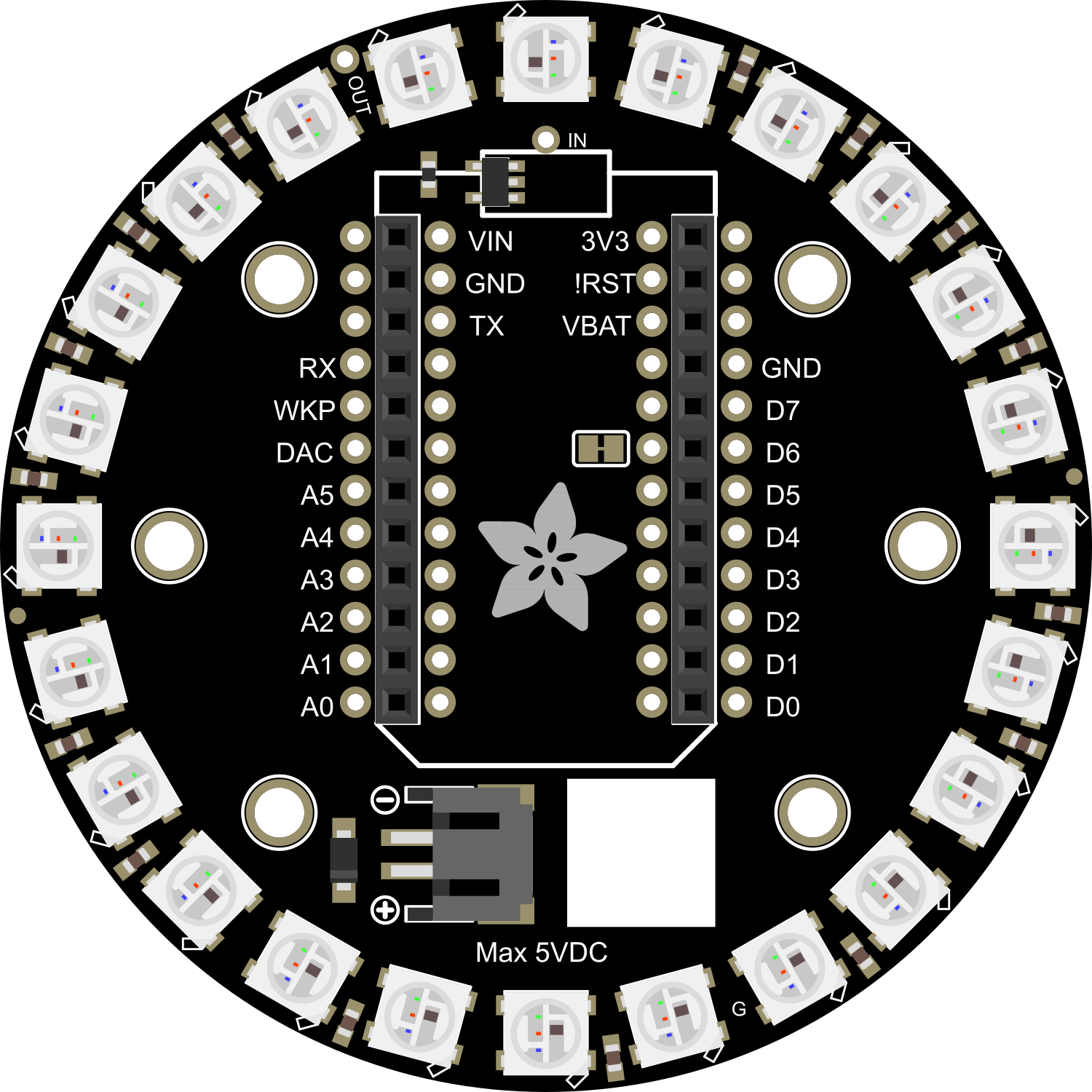
 Design with Adafruit NeoParticle Ring in Cirkit Designer
Design with Adafruit NeoParticle Ring in Cirkit DesignerIntroduction
The Adafruit NeoPixel Ring is an innovative and vibrant lighting solution that integrates RGB LEDs in a circular arrangement. This electronic component is designed to be used with microcontrollers such as the Arduino UNO to create dynamic and colorful light displays. Common applications include wearable technology, decorative lighting, and interactive art installations.
Explore Projects Built with Adafruit NeoParticle Ring
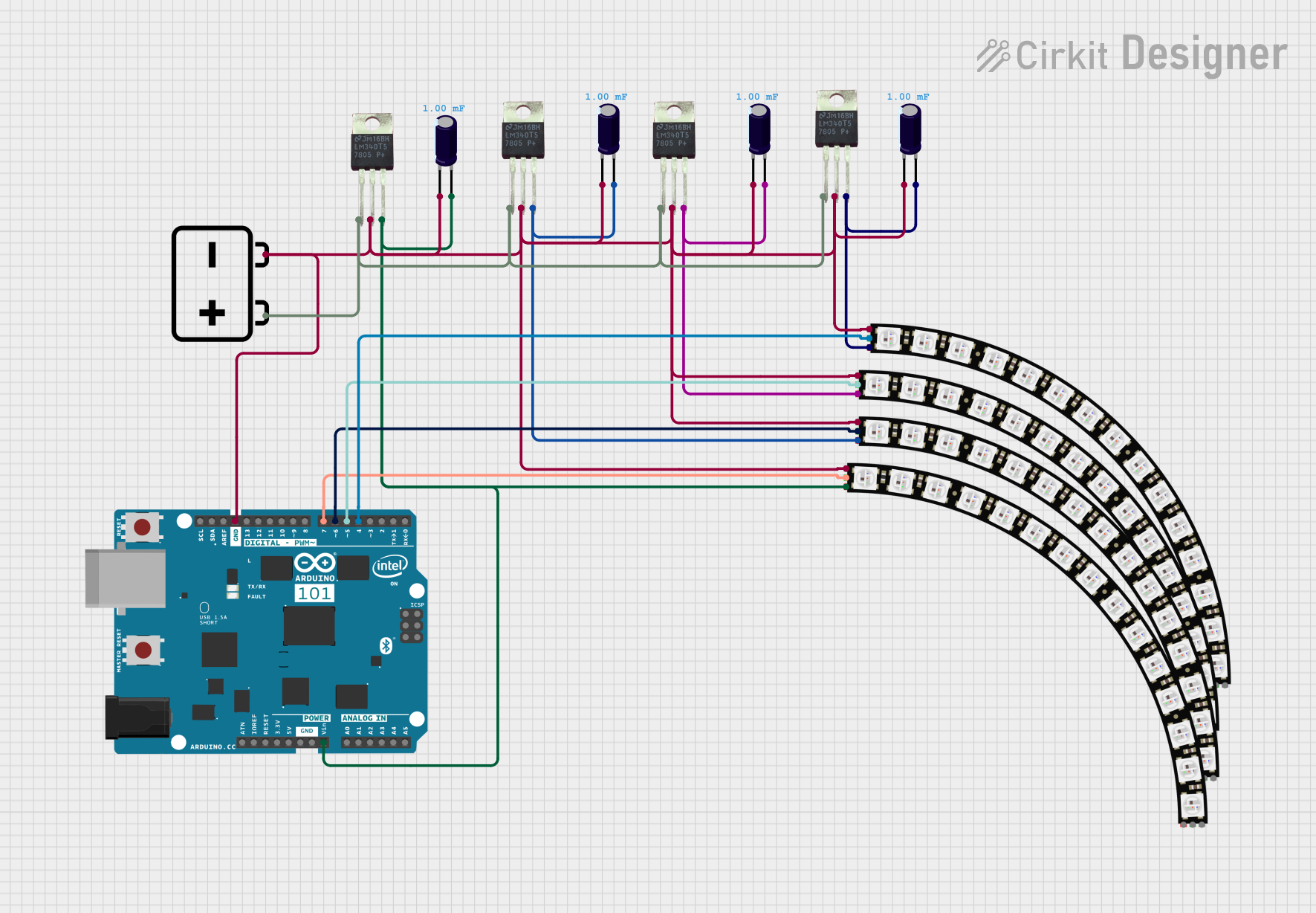
 Open Project in Cirkit Designer
Open Project in Cirkit Designer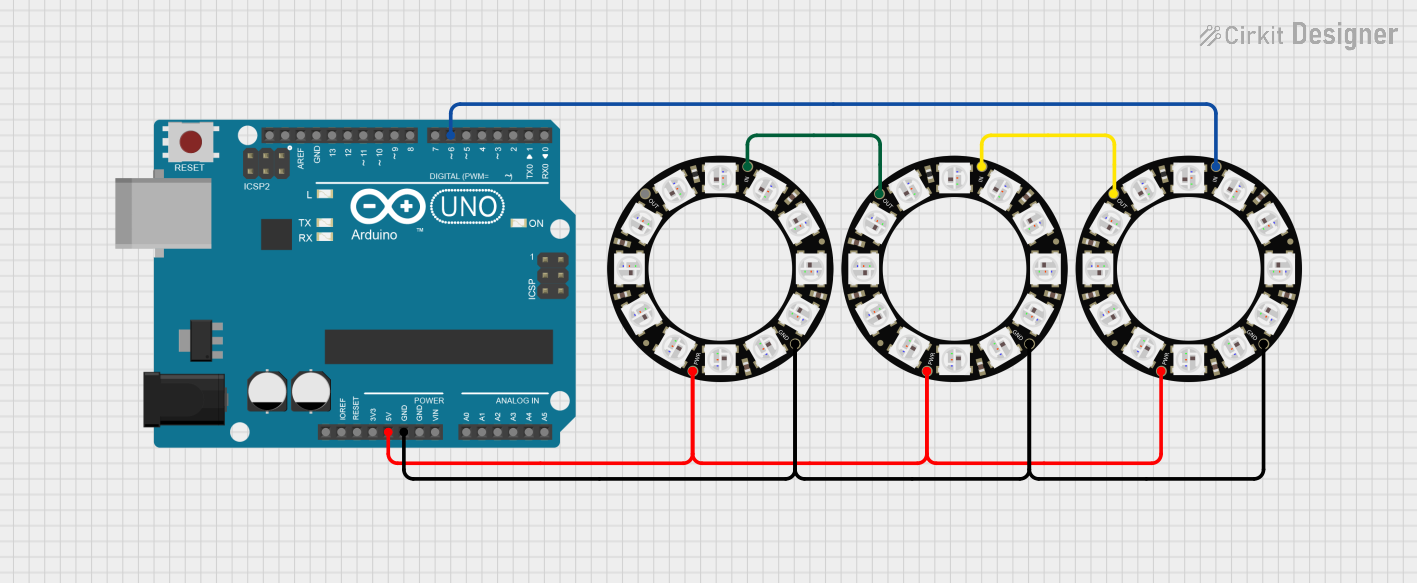
 Open Project in Cirkit Designer
Open Project in Cirkit Designer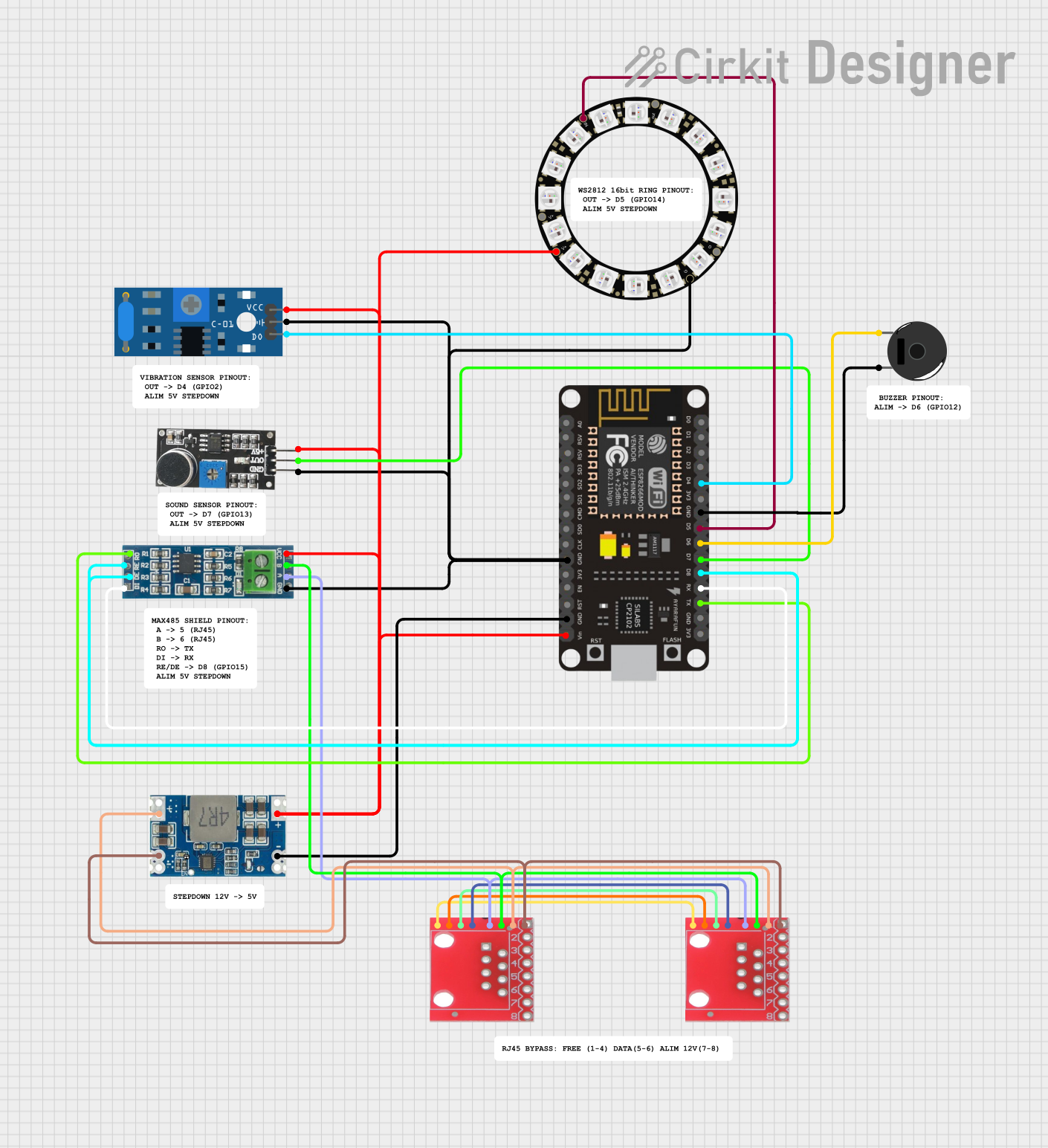
 Open Project in Cirkit Designer
Open Project in Cirkit Designer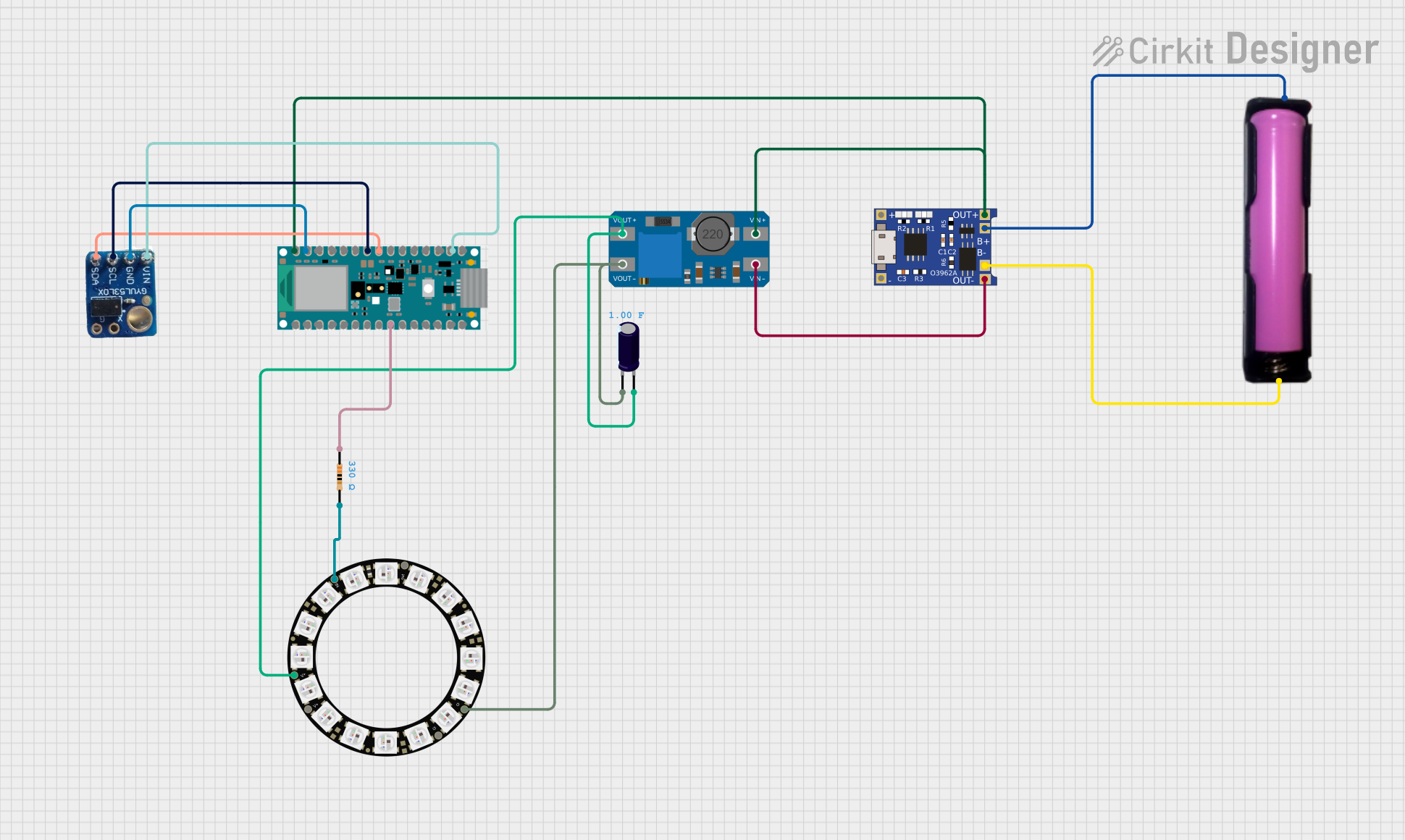
 Open Project in Cirkit Designer
Open Project in Cirkit DesignerExplore Projects Built with Adafruit NeoParticle Ring

 Open Project in Cirkit Designer
Open Project in Cirkit Designer
 Open Project in Cirkit Designer
Open Project in Cirkit Designer
 Open Project in Cirkit Designer
Open Project in Cirkit Designer
 Open Project in Cirkit Designer
Open Project in Cirkit DesignerTechnical Specifications
Key Technical Details
- Voltage: 5V DC
- Current: ~18mA per LED at full brightness
- Power Ratings: Varies with the number of LEDs
- LED Type: WS2812 or equivalent integrated RGB LEDs
- Communication Protocol: Single-wire digital control interface
Pin Configuration and Descriptions
| Pin Number | Name | Description |
|---|---|---|
| 1 | VDD | Power supply (5V DC) |
| 2 | GND | Ground connection |
| 3 | DIN | Digital input signal |
| 4 | DOUT | Digital output signal (for chaining multiple rings) |
Usage Instructions
Connecting to an Arduino UNO
- Power Supply: Connect the VDD pin to the 5V output on the Arduino and the GND pin to one of the GND pins on the Arduino.
- Signal: Connect the DIN pin to a digital I/O pin on the Arduino, for example, pin 6.
Programming the NeoPixel Ring
To control the NeoPixel Ring with an Arduino, you will need to use the Adafruit NeoPixel library. Here is a simple example code to get started:
#include <Adafruit_NeoPixel.h>
#define PIN 6 // Define the pin connected to the NeoPixels
#define NUMPIXELS 16 // Define the number of NeoPixels in the ring
// Initialize the NeoPixel ring
Adafruit_NeoPixel pixels(NUMPIXELS, PIN, NEO_GRB + NEO_KHZ800);
void setup() {
pixels.begin(); // Initialize the NeoPixel library.
}
void loop() {
for(int i=0; i<NUMPIXELS; i++) {
pixels.setPixelColor(i, pixels.Color(255,0,0)); // Set the pixel to red
pixels.show(); // Update the ring with the new color
delay(50);
pixels.setPixelColor(i, pixels.Color(0,0,0)); // Turn off the pixel
}
}
Important Considerations and Best Practices
- Power Requirements: Ensure your power supply can handle the current draw, especially when all LEDs are at full brightness.
- Heat Dissipation: Running many LEDs at full brightness can generate heat; consider heat dissipation in your design.
- Signal Integrity: Use a capacitor (1000 µF, 6.3V or higher) across the power and ground pins to prevent initial onrush of current from damaging the LEDs.
- Data Signal: A 300 to 500-ohm resistor on the data input can help prevent voltage spikes that might damage the first LED.
Troubleshooting and FAQs
Common Issues
- LEDs Not Lighting Up: Check power supply connections and ensure the correct pin is used for data input.
- Flickering LEDs: This can be due to a poor power connection or insufficient power supply.
- Incorrect Colors: Ensure the data signal is clean and there is no voltage drop across the power supply.
Solutions and Tips
- Power Issues: Use a separate power supply for larger arrays of NeoPixels to avoid drawing too much current from the Arduino.
- Signal Issues: Keep the data line as short as possible to prevent signal degradation.
- Programming Issues: Double-check the number of pixels defined in the code matches the actual number on your NeoPixel Ring.
FAQs
Q: Can I chain multiple NeoPixel Rings together?
A: Yes, connect the DOUT of the first ring to the DIN of the second, and so on. Update the NUMPIXELS in your code accordingly.
Q: How do I control the brightness?
A: Use the setBrightness() function in the Adafruit NeoPixel library to adjust the overall brightness.
Q: What is the maximum number of NeoPixels I can control with an Arduino? A: It depends on the Arduino's RAM. Each NeoPixel requires 3 bytes of RAM, so calculate based on your Arduino's specifications.
Remember to always refer to the latest datasheet and resources provided by Adafruit for the NeoPixel Ring for the most accurate and detailed information.